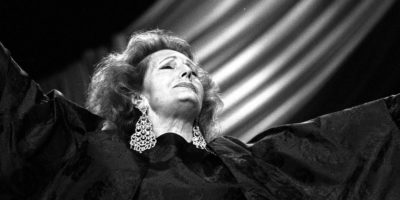
A portrait of Sir Thomas (centre) and his family by Rowland Lockey – Wikimedia
Top 10 Remarquable Facts about Sir Thomas More
Thomas More is known for his 1516 book ‘Utopia’. He also died in 1535 after he was executed by King Henry VIII who was the head of the Church of England.
Thomas was born in 1478 to Sir John More, a successful lawyer and a judge, and his mother was Agnes. He was the second born of six siblings.
In his later years, Thomas became a statesman and served from 1529-to 1532. He also served as a counsellor to King Henry VIII.
It was his stark religious beliefs and leaning towards the Catholic church that led to the fallout with King Henry VIII.
He often found himself clashing with the Protestants. More was against Reformist theology preached by William Tyndale and Martin Luther.
Growing up, More aspired to be a monk by following his father’s path. He went to school and studied law. While working for King Henry VIII, Thomas got the respect and trust of his juniors.
There is so much more about Thomas More, here are the top 10 Remarquable facts about him.
1. Thomas More wanted to be a monk but ended up as a statesman

A praying Monk. Photo by Arisa Chattasa on Unsplash
Desiderius Erasmus of Rotterdam was a theologian and a close friend to Thomas More. He is quoted saying that More once seriously contemplated forsaking his legal career to become a monk.
This was between 1503 and 1504 when More lived near the Carthusian monastery outside the walls of London.
He occasionally joined in the monks’ spiritual exercises and greatly admired their piety. Despite this, More resorted to remaining a layman and sought an elective seat.
He took part in the election to Parliament in 1504. In 1505, More got married.
Although he was not a practising monk, More was frugal and would be spotted wearing a hair shirt next to his skin, Furthermore, he occasionally engaged in self-flagellation.
His way of life got him recognition by the Third Order of Saint Francis. He is honoured as a member of that Order on their calendar of saints.
2. Sir Thomas More coined the word Utopia

Title woodcut for Utopia written by Thomas More. Image by Marcok – Wikimedia
His most famous book is Utopia. More coined the word to mean an ideal place that does not exist.
Today, the term has come to be recognized as an English word. The term is used in English to refer to an idea or concept that is idealistic and highly desirable, but at the same time is completely impracticable and unrealistic.
More is also said to have come up with socialist and liberalist ideas common in political science.
What’s more, see what I did there! A room in the Kremlin that is devoted to Thomas More because of his communist ideals.
3. Sir More Opposed King Henry VIII’s separation from the Catholic Church
Thomas More worked for King Henry VIII. More was highly regarded by other staff. He was also a staunch believer in the doctrines of the Catholic Church and the Papal office.
When King Henry VIII wanted to annul his marriage to Catherine of Aragon, Thomas strongly opposed it. According to More, it was against the Church.
King Henry VIII had wanted to leave the Catholic Church and consequently, Thomas refused to take the Oath of Supremacy.
This Oath meant he acknowledged the King’s supremacy as head of the Church of England. Thomas was executed in 1535.
His last words were “I die the King’s good servant, and God’s first”.
4. God’s first servant and King’s second were Sir Thomas More’s last words
It was a grievous offence to disrespect the King. More did not accept the king’s wish to divorce his wife Catherine who could not sire him a son.
He resigned from the House of Commons stating his poor health. But, the real reason was his disapproval of King Henry’s disregard of the Catholic Church Doctrines as well as his divorce of Catherine.
The King went ahead and married his new love, Ann Boyle in 1533. King Henry VIII felt disrespected.
Therefore, Thomas More was arrested and tried for treason. He was found guilty and was sentenced to death.
Pope Pius XI declared him a martyr and canonized him in 1935. In 2000, Pope John declared him the patron saint of statesmen and politicians.
5. More made a tomb and an epitaph for him and his family

Sir Thomas More family vault. Photo by Liondartois – Wikimedia
Before he died, Thomas built a tomb and an epitaph on the southern wall of the Chelsea Old Church. The tomb was for himself and his wives.
When More served Mass, it is said he would leave by the door just to the left of it.
On the tomb, he wrote his ancestry and accomplishments in Latin. He also included his role as a peacemaker between the various Christian European states.
He is, however, not buried here, nor is it entirely certain which of his family may be. The tomb is open to the public at specific times.
More was beatified in 1886 and canonized by the Catholic Church as a saint in 1935.
Among other surviving relics is his hair shirt that was presented for safekeeping by Margaret Clement.
6. He was considered one of the Revolutionary Thinkers
Thomas More was praised as a Communist hero by Karl Marx, Friedrich Engels, and Karl Kautsky.
This was because of the Communist attitude to property in his Utopia. Under Soviet Communism, the name of Thomas More was 9th from the top of Moscow’s Stele of Freedom (also known as the Obelisk of Revolutionary Thinkers).
He was credited as one of the most influential thinkers “who promoted the liberation of humankind from oppression, arbitrariness, and exploitation.”
A monument was erected in 1918 in Aleksandrovsky Garden near the Kremlin at Lenin’s suggestion in his honour.
However, it was pulled to pieces on 2 July 2013, during Vladimir Putin’s third term as President of post-Communist Russia.
7. More did not let go of his religious convictions even after he was arrested

The beheading of Sir Thomas More by Internet Archive Book Images – Wikimedia
One thing about More courageous and very steadfast when it came to his religious beliefs.
This was even more evident during his imprisonment, trial, and execution. He gained more respect among Roman Catholics even after his death.
After his execution, His friend Erasmus defended his character as “purer than any snow”. He added that More was a genius that England never had and never again will have.
More tributes were shared by Emperor Charles V who said: “Had we been master of such a servant, we would rather have lost the best city of our dominions than such a worthy councillor.”
Jonathan Swift, an Anglican, stated that More was “a person of the greatest virtue this kingdom ever produced”.
8. His book Utopia brought forth a new literature genre
In 1516, More published Utopia. This was a work of fiction that depicted a pagan and Communist Island on which social and political customs are entirely governed by reason.
The description of the island of Utopia was by a mysterious traveller to support his position that communism is the only cure for the egoism found in both private and public life.
This was said to be a direct jab at Christian Europe which was divided by self-interest and greed.
The book covered vast topics such as theories of punishment, state-controlled education, multi-religion societies, divorce, euthanasia and women’s rights.
From the book’s contents, More was described first as an established and skilled humanist.
Utopia became the precursor of a new literary genre: the utopian romance.
9. More defended the Catholic Church and its traditions

Portrait of Sir THomas More by By Hans Holbein the Younger – Wikimedia
When Martin Luther attacked Henry VIII in print calling him a “pig, dolt, and liar”. More, at the king’s request, composed a rebuttal: the Responsio ad Lutherum was published at the end of 1523.
In the rebuttal, he defended papal supremacy, the sacraments, and other Church traditions.
Further, More described Martin Luther as an ape, a drunkard, and a lousy little friar.
His confrontation with Luther established More’s theological conservatism.
10. Only his daughter witnessed his execution
On the day of his execution, More recited the Miserere (Psalm 51, the penitential psalms) while kneeling. His executioner allegedly begged his pardon, at which More rose merrily, kissed him and gave him forgiveness.
More’s last wish was that his adopted daughter Margaret Clement (née Giggs) be given his headless corpse to bury.
She was the only member of his family to witness his execution. He was buried at the Tower of London, in the chapel of St Peter ad Vincula in an unmarked grave.
His head was fixed upon a pike over London Bridge for a month, according to the normal custom for traitors.
A plaque and small garden commemorate the famed execution site on Tower Hill, London, just outside the Tower of London.
Planning a trip to Paris ? Get ready !
These are Amazon’s best-selling travel products that you may need for coming to Paris.
Bookstore
- The best travel book : Rick Steves – Paris 2023 – Learn more here
- Fodor’s Paris 2024 – Learn more here
Travel Gear
- Venture Pal Lightweight Backpack – Learn more here
- Samsonite Winfield 2 28″ Luggage – Learn more here
- Swig Savvy’s Stainless Steel Insulated Water Bottle – Learn more here
Check Amazon’s best-seller list for the most popular travel accessories. We sometimes read this list just to find out what new travel products people are buying.










